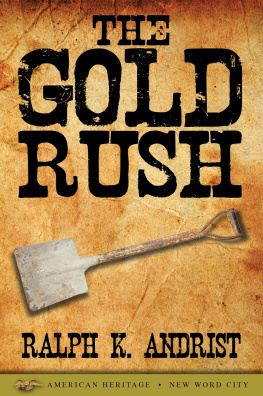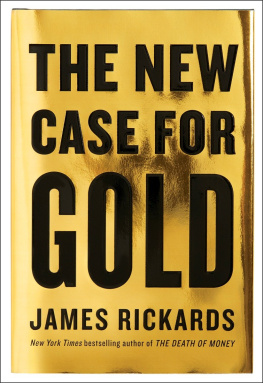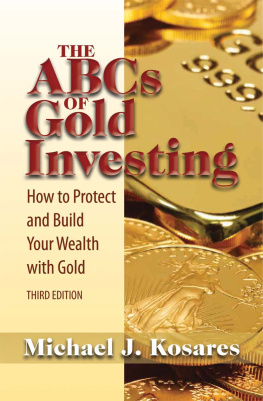Copyright2012 by Yoni Jacobs. All rights reserved.
Published by John Wiley & Sons, Inc., Hoboken, New Jersey.
Published simultaneously in Canada.
No part of this publication may be reproduced, stored in a retrieval system, or transmitted in any form or by any means, electronic, mechanical, photocopying, recording, scanning, or otherwise, except as permitted under Section 107 or 108 of the 1976 United States Copyright Act, without either the prior written permission of the Publisher, or authorization through payment of the appropriate per-copy fee to the Copyright Clearance Center, Inc., 222 Rosewood Drive, Danvers, MA 01923, (978) 750-8400, fax (978) 646-8600, or on the Web at www.copyright.com . Requests to the Publisher for permission should be addressed to the Permissions Department, John Wiley & Sons, Inc., 111 River Street, Hoboken, NJ 07030, (201) 748-6011, fax (201) 748-6008, or online at http://www.wiley.com/go/permissions .
Limit of Liability/Disclaimer of Warranty: While the publisher and author have used their best efforts in preparing this book, they make no representations or warranties with respect to the accuracy or completeness of the contents of this book and specifically disclaim any implied warranties of merchantability or fitness for a particular purpose. No warranty may be created or extended by sales representatives or written sales materials. The advice and strategies contained herein may not be suitable for your situation. You should consult with a professional where appropriate. Neither the publisher nor author shall be liable for any loss of profit or any other commercial damages, including but not limited to special, incidental, consequential, or other damages.
For general information on our other products and services or for technical support, please contact our Customer Care Department within the United States at (800) 762-2974, outside the United States at (317) 572-3993 or fax (317) 572-4002.
Wiley also publishes its books in a variety of electronic formats. Some content that appears in print may not be available in electronic books. For more information about Wiley products, visit our web site at www.wiley.com .
Library of Congress Cataloging-in-Publication Data:
Jacobs, Yoni, 1986
Gold bubble: profiting from gold's impending collapse/Yoni Jacobs.
p. cm.
Includes bibliographical references and index.
ISBN 978-1-118-23935-3 (cloth); ISBN 978-1-118-28309-7 (ebk);
ISBN 978-1-118-28413-1 (ebk); ISBN 978-1-118-28702-6 (ebk)
1. Gold. 2. GoldPricesForecasting. 3. Investments. 4. Commodity futures.
I. Title.
HG293.J25 2012
332.63dc23
2011050803
ISBN 978-1-118-23935-3
Preface
Someone with perfect foresight should have foreseen that the process was not sustainable and that an implosion was inevitable.
Charles Kindleberger
Gold is in a bubble that is set to burst.
I sit and write this without a clue as to whether we've reached the top in gold or whether we're getting ready for a parabolic rise. All I know is that gold is in a bubble, gold prices will come crashing down, and many people will lose a lot of money. I write this book after a year of intense analysis of gold, commodities, emerging markets, the dollar, and the stock market. After carefully, meticulously, and thoroughly analyzing gold prices since the 1880s, inflation trends, fundamental stories, chart patterns, investment behavior, news coverage, and a nearly endless amount of information from stock prices to economics to psychologyI boldly and justifiably claim that gold is in a bubble that is ultimately due to collapse and severely hurt the average investor.
I am not yet sure of exactly when the bubble will pop, though I have a few analysis-based guesses. What I do know, however, is that this book is an extremely time-sensitive matter; it must be made public as soon as possible. While this book offers an extremely in-depth analysis of gold and all of its driving factors, the lessons learned within and the clues pointing to a bubble will likely serve as a tremendous benefit for analysis of future bubbles across a wide range of asset classes.
At the height of the technology bubble and again at the height of the housing bubble, Yale Professor Robert Shiller released the first and second editions of his book Irrational Exuberance a prediction of an impending collapse in the markets due to extreme investor enthusiasm and unsustainable speculative bubbles. Not only did Shiller make two of the greatest calls in market history, but his highly contrarian opinions were published despite the fact that the rest of the world believed the opposite: that technology and housing would continue to soar (though we now know they were all wrong). With gold prices up over 600 percent in 10 years, and with huge warning signs appearing that signal extreme investor enthusiasm, euphoric herd behavior, and an upcoming collapse to the Gold Bubble, I have written my own version of Irrational Exuberance . But this time, irrational exuberance has appeared because of massive fears and extreme pessimism over the future of markets and the U.S. dollar. This time, gold is the subject of irrational exuberance.
To make matters worse, unlike in the case of technology stocks and housing, gold's historical significance has created an aura and illusion that gold prices will never fall. Since gold has been used as currency and has been sought after by nearly every civilization for thousands of years, gold investors assume that investing in gold is safe. But with gold now an object of mass speculation and subject to herd-like behavior, we are not far from the day when investors realize that gold is, in fact, an unsafe haven.
How I Reached This Conclusion
After writing this book and putting all of the pieces together to form a coherent picture of gold's history and future, I cannot be any less than 95 percent certain that gold is setting up for a devastating fall. All the evidence I see, all the strategies I have learned in spotting bubbles, all the technicals, charts, stories, and commercials show me signs of a bubble. The entire world picture fits in almost perfectly with my view on gold. I finally see how economics, currencies, stock markets, reserve rates, inflation, forecasts, commodities, time, and the consumer all blend together to form a coherent big-picture view of the markets and the world.
To further support this claim, I have supported my analysis by applying some of the most prominent works written by industry leaders and highly regarded analysts. For studies of asset bubbles, speculative manias, financial crises, and their precipitating factors, I have applied Robert Shiller's bestselling Irrational Exuberance and Charles Kindleberger's Manias, Panics, and Crashes . For analysis of Elliott Waves and growth/decay cycles, I have applied Frost and Prechter's Elliott Wave Principle . For a better understanding of how different markets, sectors, indices, and asset classes interact, I have applied John Murphy's Intermarket Analysis . Finally, for behavioral studies and investor psychology, I have applied Martin Pring's Investment Psychology Explained and Carl Futia's The Art of Contrarian Trading . These books have not only provided a very thorough set of references, but have also strongly supported my analysis and claims of a bubble in gold.
In short, I have written a book because I have found a perfect example of a bubbleand one that I have followed for quite some time. I have provided plenty of charts and images that may better explain what I'm writing aboutI'm a visual person myself. I have extended and further developed the gold bubble argument into a groundbreaking and ultimately accurate prediction at a time when the rest of the world is irrationally exuberant about the future of gold. Finally, because the opportunity presented itself, I have followed this bubble, analyzed it even to my occasional disbelief, and written a guide to the impending collapse of the gold bubble. I strongly think this book has the potential to become a foundational go-to guide for identifying bubbles and speculative manias.








